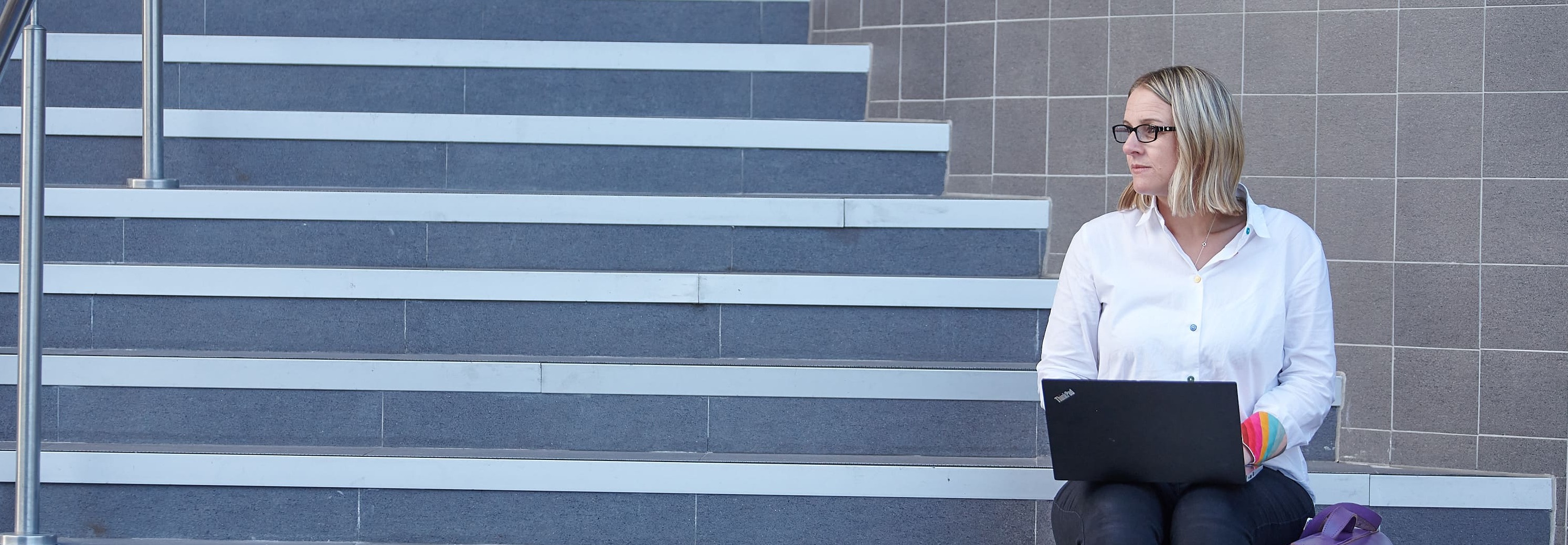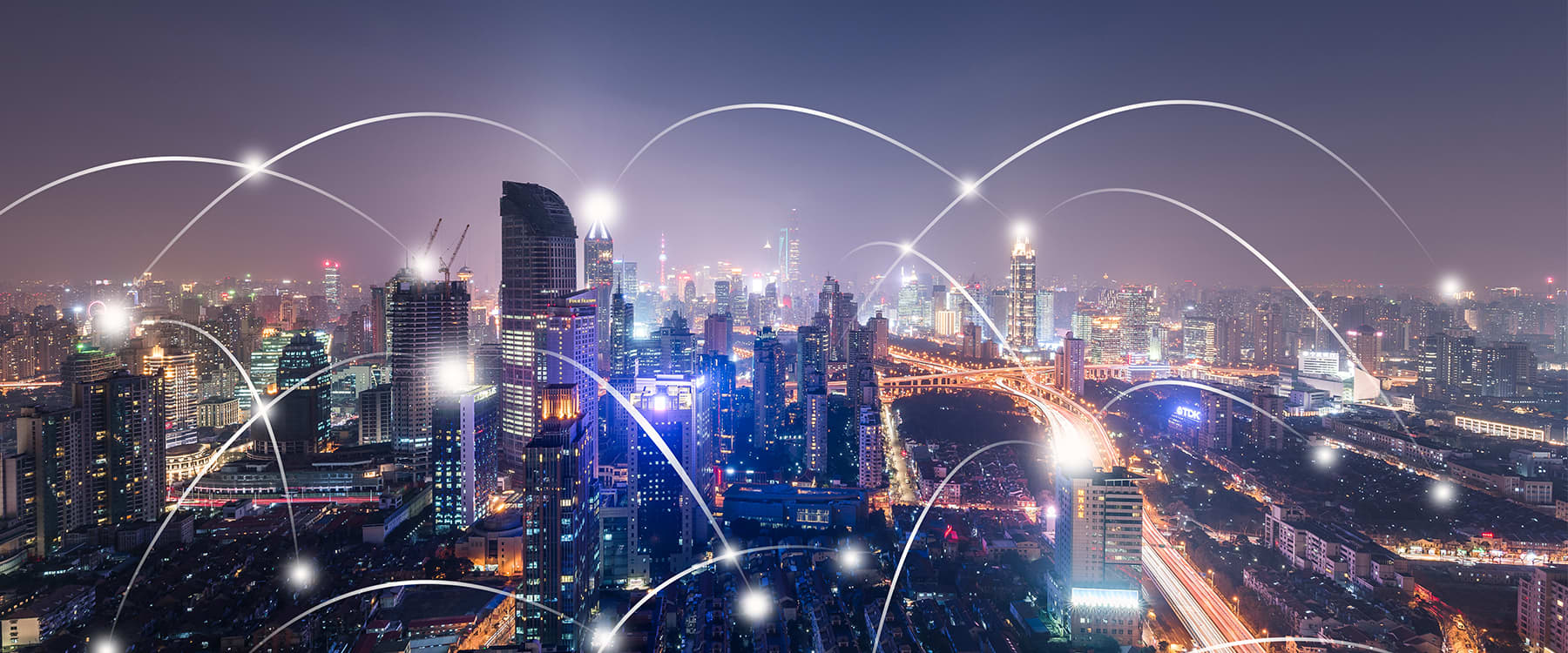
Chapter
Introducing Software-defined Wide Area Network (SD-WAN)
Businesses are increasingly reliant on cloud and SaaS-based applications, so the need for secure, efficient and simplified network operations has become more critical than ever.
Remote working is a top driver for cloud adoption and digital transformation, but for this to be successful, networks need to be fit for purpose.
Enter Software-defined Wide Area Network (SD-WAN).
SD-WAN provides a reliable, low latency and high-performance Wide Area Network (WAN), connecting individual devices into a centralised system. This delivers enterprise-grade services over large geographical distances efficiently and securely – perfect for businesses with multiple branch sites and/or remote users.
Secure SD-WAN has many business benefits; from more network control and visibility to optimised application and cloud performance. It’s no surprise then that secure SD-WAN solutions are fast becoming a key piece of the larger digital transformation puzzle.
In this guide, we’ll cover what SD-WAN is, the benefits of secure SD-WAN. Using statistics, and expert insights, we will demonstrate why SD-WAN is becoming the number one choice for businesses looking to future-proof their network infrastructure.
Download our guide on SD-WAN to read on the go.

What is SD-WAN?
SD-WAN is a transformative connectivity solution. It provides reliable, optimised application and security between multiple data centres, remote offices and cloud environments. It’s great news for businesses with multiple sites as it simplifies network operations and enhances IT capabilities using cloud hosting. Network administrators can remotely manage and deploy applications using a centralised software-defined (SD) management tool by creating a virtualised WAN overlay that securely connects users to their devices.
In its basic form, SD-WAN creates Virtual Private Networks (VPNs) to deliver private, secure connectivity.
Secure SD-WAN uses virtualisation to connect geographically diverse sites in the most efficient way possible. So, you can make better use of your existing network infrastructure and boost your power to deliver highly available, scalable and secure applications.


Why are businesses choosing Cisco Meraki and SD-WAN?
Modernising the WAN architecture has become vital thanks to the need for more effective WAN management and automation, growing bandwidth demands, and a rise in cloud adoption.
The adoption of SD-WAN is skyrocketing. According to a recent Gartner report, as of 2024, around 60% of enterprises have deployed SD-WAN solutions, up from 30% in 2020.
Paired with SD-WAN, Cisco Meraki offers seamless, cloud-managed solutions that take the complexity out of network management. Its cloud-based dashboard allows you to manage your network from anywhere, while its plug-and-play deployment saves you time. With integrated, always-updated security features, Cisco Meraki ensures your network remains protected without any extra effort.
What are the benefits of SD-WAN?
Instead of the fixed infrastructure of a traditional WAN, SD-WAN involves virtualised routers and firewalls with a single point of control – or a ‘single pane of glass’ view. With that comes a host of benefits in terms of performance, deployment and WAN management.
Here are some of the other benefits you can expect from SD-WAN:
- Policy-based management
With SD-WAN you can create application policies to meet your business needs and use these policies to determine dynamic path selection. Traffic will be automatically steered based on the level of priority.
- Not limited to hardware
Secure SD-WAN isn’t location-dependent or hardware-focused like traditional WAN. It uses software to manage a WAN, which means you get greater flexibility and more control to update and expand your network. This can make it simpler to deploy at new locations too. - Bandwidth efficiency
Thanks to dynamic path selection, you’ll see noticeable network performance improvements. Since traffic is routed to meet current conditions and requirements, your bandwidth is allocated where it can have the best impact. - Service provider agnostic
You’re not tied to one connectivity provider with SD-WAN. So, you may be able to save money by avoiding vendor lock-in and getting the best deal with different providers on bandwidth, for example. - Routing flexibility
Traditional WAN only routes differently on the loss of a route. SD-WAN makes real-time routing changes to your application traffic using different connection types like MPLS, broadband or 4G to choose the optimum path. - Seamless cloud integration
Unlike traditional WANs, SD-WAN supports applications hosted in public or private clouds. M247’s solution, for example, delivers cloud integrations for improved user experience, security and network performance across any location and to any cloud.

How SD-WAN Works
SD-WAN works by creating a virtualised overlay to an existing network. While a traditional WAN requires hardware at each end of the network to complete the connection, SD-WAN sits on top of this connection.
Businesses use secure SD-WAN to link branch offices to a central network in the Cloud, which increases control and visibility. The best part? SD-WAN measures real-time performance of the network and automatically chooses the most efficient route to deliver the optimum user experience.
What’s more, organisations can view the entire network from a centralised controller and make critical business decisions based on real-time insights. For example, your business could use the real-time data in the dashboard to:
Monitor application performance: Getting reports of slow application performance? Your IT team will be able to identify if sites within the SD-WAN network are running at high capacity on their bandwidth, which may be causing slow response times (not to mention productivity loss and poor end-user experience). This can be monitored to determine if the issue is isolated or more prolonged, indicating that the bandwidth to that location may need to be increased.
IT can also identify which applications are using a lot of bandwidth. For example, are people streaming content which is impacting other applications? Streaming traffic could be throttled to reduce the impact on business applications.
Assist with capacity planning bandwidth: It will capture historical data showing bandwidth use and when bandwidth may require updating.
Get security alerts: URL filtering or IPS, for example, can inform the administrators about potential security risks to the business. They can then adopt or change their internal policies and end host protection to protect the business against external threats.
Businesses can also update and implement configurations and policies across all business sites from this centralised hub for better application performance and security. And last but not least, SaaS traffic can be identified and optimised for businesses consuming applications from the cloud via built-in integrations with Office 365, Amazon Web Services, Azure or Google Cloud.
So, which one is right for you?
If your business has multiple branch sites and/or remote users, SD-WAN is a great choice for your network connectivity.
SDN focuses on the internal network and is ideal for large complex networks that require a lot of uptime.
Since each business has its own data transfer requirements and budgets, there’s no one-size-fits-all solution. You may choose to continue using a traditional MPLS network for some parts of your business while other business areas consume SDN or SD-WAN. You can also use a combination as SD-WAN is able to use your existing infrastructure, closing any previous connectivity gaps you may have experienced.
.jpg?width=3000&height=2000&name=DSC_2821%20(1).jpg)
SD-WAN V MPLS: What’s the difference?
Before secure SD-WAN, businesses connected multiple sites by linking LANs through routers and VPNs using traditional WAN technology. Unlike SD-WAN, WANs tend to rely on MPLS connections.
MPLS was first developed in the 1990s and is a routing method used to connect to the WAN. It speeds up the flow of network traffic using the shortest path and directs data across networks via labels instead of relying on the typical routing process.
Now being considered as an alternative to MPLS, SD-WAN optimises traffic routing in real time by combining multiple connection types - including MPLS, broadband, DIA (Dedicated Internet Access), LTE and more - for greater flexibility, among other benefits.
Discover the differences between SD-WAN, MPLS and 5G, and how they can support your business.
Click to learn more
Let's take a closer look at the differences between SD-WAN and MPLS:
Functionality
SD-WAN is a virtual overlay technology that creates a private network over the existing network, whereas MPLS runs on proprietary hardware to deliver dedicated lines with private connections linking data centres and branch offices.
MPLS can be a reliable option for preventing packet loss. It also offers high reliability to latency-sensitive workloads, however, depending on your business needs, flexibility and cost may be areas it will be worthwhile considering.
In contrast, secure SD-WAN can direct internet and cloud-bound traffic to branch offices without backhauling.
Cloud and SaaS-based applications also continue to gain traction, and, combined with an increase in cloud adoption, this leads to high volumes of WAN traffic.
SD-WAN optimises application and cloud performance by mitigating network issues in real time with automated path selection. By automatically steering critical applications around network problems, SD-WAN helps end disruption and interference to your workforce.

Technical differences
Centralised management
Centralised WAN control is one of the key features of SD-WAN. M247’s secure SD-WAN solution, for example, gives you access to a single dashboard, which means you’ll gain valuable data and detailed visibility into the trends of your WAN.
With this network control, you can make business-critical decisions on who and how your network is accessed and used based on real-time insights.
Network provider roles
In most cases, the router provider of an MPLS network provides connectivity, which the SD-WAN provider may not provide. This allows businesses to change connectivity providers and even run a single WAN over connections provided by several connectivity suppliers.
Organisations may be able to save money by getting the best deal with different providers on bandwidth, for example, as they’re not tied to one provider.
Service chaining
Network operators can also use service chaining to inject one or more network services like firewalls, Network Address Translation (NAT) and Deep Packet Inspection (DPI) into the path of specific data traffic. This is an automated way to set up suites or catalogue of pathways for traffic to travel across the WAN.
For example, businesses can use service chaining to redirect remote traffic through a firewall and then IPS (Intrusion Prevention System).
Service chaining can improve operational efficiency and application performance by automating how the network deals with different types of traffic flows, depending on your requirements for latency, security or quality of service.

Important to note
It is likely there will be an increased use of SD-WAN which may lead to a decrease in the demand for MPLS, however, businesses may continue to use MPLS in the future.
Hybrid solutions, such as combinations of secure SD-WAN and MPLS, are much likelier as businesses look for higher standards of security and flexibility. So, the two could work together to enhance legacy MPLS services to keep data secure and deliver more reliable networks anywhere.
One way to combat potential network challenges is having a hybrid connectivity solution. Read our blog to learn why more businesses are choosing a blended model.
SD-WAN capabilities
SD-WAN capabilities can vary depending on business requirements and the SD-WAN provider. However, secure SD-WAN offerings typically include the following:
Centralised control
SD-WAN provides greater visibility, agility and control by providing a ‘single pane of glass’ view of the network. This centralised console combines multiple tools into a single dashboard to help you better manage and deploy branch office services. It also allows administrators to react and make changes quickly in response to policy updates.
Dynamic path selection
SD-WANs assess the network performance in real time to automatically steer traffic to meet current conditions, requirements and user demands. You can mitigate network issues with automated path selection, which routes critical applications around network problems, eliminating disruption and interference to your operations.
Connectivity agnostic
SD-WAN abstracts away from the differences between connectivity types. By using multiple types of connectivity, it can be added to an existing MPLS to create a hybrid network. Or it can replace MPLS. This flexibility in options means the software can choose the best one that meets business requirements at the time.
Application awareness
Traffic is automatically sent to WAN links with the required network characteristics and path conditions to support these applications in real time. This means administrators can manage routing and bandwidth allocation based on the priorities and demands of applications to ensure optimal traffic delivery and quality of experience.
These are just some SD-WAN capabilities: they all provide businesses with extensive performance and efficiency benefits. SD-WAN also prioritises your most critical network traffic and offers optimised network performance as connectivity and traffic volumes become increasingly complex.
How can SD-WAN benefit my business?
A work-from-anywhere approach is becoming unavoidable for businesses’ networks and security. SD-WAN has the capabilities, including automation, visibility and flexibility you need to simply and efficiently manage your network.

Here’s a breakdown of the ways SD-WAN can benefit your business:
Boost business agility
The adaptability and efficiency of SD-WAN helps accelerate business agility while providing the reliability and security to support remote working. It can also quickly scale to cope with higher or lower levels of capacity, making it an ideal solution for businesses looking to future-proof their network.
Increased network visibility
SD-WAN provides in-depth visibility into end-to-end network and application performance simply via a single dashboard. This means you’ll get real-time analytics and reports to see how the network is performing and identify and address any issues quickly.
Better security features
Using SD-WAN means you benefit from end-to-end encryption - throughout your entire network. Think of it like a tunnel where all your traffic (from any device) can securely pass through. You can also set up virtual firewalls to see any digital threats or malware. And all this happens in real time. This means you’ll be able to instantly identify any security issues and take the appropriate action to protect your business, minimising risk and security gaps. With greater visibility, you can also prevent attacks from easily spreading across the whole network and turning into security breaches.
Improve efficiency and user experience
A flexible, dynamic, always-on network architecture supports better working practices, including bringing remote working into the WAN via the cloud and mobile, and enhances the end-user experience.
Reduce network complexity
Managing network complexity continues to be a top challenge in IT***. SD-WAN can help alleviate this. Instead of relying solely on private MPLS networks, using secure SD-WAN on a network with DIA underlay and hybrid cloud infrastructure can simplify how these resources are consumed.
Flexibility
For multi-site businesses looking to merge multiple IT and networking technologies into a single, centrally managed network, SD-WAN is an ideal option. Its platform and infrastructure agnostic qualities are also well suited to the development of hybrid cloud architectures.
Simplified WAN management
By successfully integrating with all current network links and cloud architectures at different sites, SD-WAN provides a central hub allowing you to treat diverse systems as a whole rather than a sum of individual parts.
Financial benefits
Combined, all the advantages we’ve mentioned above can have a significant positive impact on the bottom line. For instance, greater application and network efficiency can mean a lower total cost of ownership. Plus, data from the software can prove invaluable in demonstrating bandwidth and usage to optimise performance and other cost-saving opportunities.
At M247, our SD-WAN solutions are bespoke, flexible, and scalable. Learn more about how we can help improve your network performance and reduce network complexity.
How to choose a Managed SD-WAN Service Provider
There are two options for adopting
SD-WAN:
- Move to SD-WAN and manage the network yourself (DIY)
- Partner with an MSP for managed SD-WAN solutions
Forward-thinking businesses are turning to secure SD-WAN for the many benefits we’ve mentioned above. Yes, SD-WAN services orchestrate the network, increase security and provide greater control and visibility. But that doesn’t make the network inherently simpler to deploy and manage.
It still requires in-depth networking skills and resources to manage SD-WAN in-house. The complexity of SD-WAN deployment can also vary, so having the right level of expertise is vital to get it right from the start.
A lack of internal resources and management complexity can hinder the deployment of SD-WAN. So, many businesses opt for the second choice and partner with a reputable managed service provider like M247 for peace of mind.

Here are six key questions to ask a managed SD-WAN service provider:
1. Do you offer integrated security?Most SD-WANs come with basic built-in security, but it’s not robust enough to meet enterprise security requirements. So, it’s important to find out whether the MSP can layer additional security on top of the solution depending on your needs.
Be sure to look for an MSP that can provide fully-integrated security, such as cloud-delivered firewalls, DNS-layer security and advanced threat intelligence, which protects against security blindspots and cyber threats.
A good MSP will work with you to build a security posture to your exact requirements.
2. Does my organisation need a fully managed SD-WAN solution or a co-managed service?The best option for your business will depend on several factors, including your internal resources and how much control you want over the day-to-day management of your network.
Identify your requirements and look for an MSP that has the flexibility to offer both options. This will ensure your business demands, resources and goals align with the service offering from the beginning.
3. What are your team’s SD-WAN credentials and expertise?Partnering with an MSP with in-depth domain expertise is critical when deciding on an SD-WAN provider. Your chosen provider should also have the skills to understand your existing network and your application requirements to offer the best service for your needs.
Don’t be afraid to ask questions about the team behind the scenes, their credentials and testimonials. By asking about their experience and how they implement their services, you’ll be able to determine the right MSP with a successful track record.
4. What does a typical managed SD-WAN deployment and migration look like?Partner with an MSP that gets to know your business, its requirements and challenges to identify the best solution for your needs. They should work with you to develop a rollout plan or to migrate from your existing solution. Managed deployment should also include the configuration of the SD-WAN fabric.
5. Do you offer 24/7 monitoring and support?Your chosen MSP must have the tools and expertise to monitor all devices and provide back-up support 24/7, 365 days of the year. Continual monitoring is key to detecting any device failures or system crashes to maintain peak performance. All configurations should be backed up daily, so they can be restored quickly and effectively if any issues arise.
6. What are your SLAs?An MSP’s service-level agreement (SLA) provides a good indication of its performance levels. As with any managed service, look for an SD-WAN partner that offers high availability for your networks – as close to 100% as possible (M247’s is 99.95%). A back-up system that can take over workloads during maintenance is also something to look for in a provider, so you can continue working uninterrupted.
Setting up SD-WAN with M247
Here at M247, we believe connectivity should be simple. We know how vital network visibility and application performance are to any business. That’s why our MConnect service offers tailored connectivity solutions, including secure SD-WAN.
When you implement an M247 SD-WAN solution, you can take advantage of our reliable, low latency, high capacity network and give each user an optimised experience for optimum productivity anytime from any device.
What’s more, we offer two SD-WAN management options, giving you the flexibility to choose the solution that meets your needs.

Why M247?
Experts in network connectivity
Our certified engineers provide 24/7/365 support, ensuring you get end-to-end SD-WAN support with complete visibility and control of your network.
Trusted advice
- Identify the best solution for your business
- Solve network challenges to help your business grow
- Direction on the configuration most suitable for you.
Managed deployment
- M247 will work with you to develop a rollout plan or to migrate from your existing solution.
In-life support
- Removes the day-to-day responsibility, so that you can focus on other profitable tasks
- Peace of mind that trained support teams can offer assistance for configuration changes
- Monitoring of all SD-WAN devices 24/7, 365

Further reading













